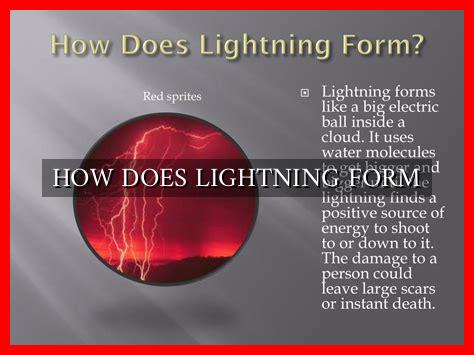-
Table of Contents
How Does Lightning Form
Lightning is a fascinating natural phenomenon that has captivated humans for centuries. The sight of a lightning bolt streaking across the sky can be both awe-inspiring and terrifying. But have you ever wondered how lightning actually forms? In this article, we will explore the science behind lightning and uncover the mysteries of this electrifying event.
The Basics of Lightning
Lightning is a sudden electrostatic discharge that occurs during a thunderstorm. It is typically accompanied by thunder, which is the sound produced by the rapid expansion of air heated by the lightning bolt. Lightning can take on various forms, including cloud-to-ground, cloud-to-cloud, and intra-cloud discharges.
Formation of Lightning
So, how does lightning form? The process begins within a thunderstorm cloud, where strong updrafts and downdrafts create an environment ripe for the development of electrical charges.
. As water droplets and ice particles collide within the cloud, they become charged. Positively charged particles rise to the top of the cloud, while negatively charged particles sink to the bottom.
- Positive charges accumulate at the top of the cloud.
- Negative charges accumulate at the bottom of the cloud.
As the charge separation intensifies, a powerful electric field is created within the cloud. When the electric field becomes strong enough, it can overcome the insulating properties of the air and produce a lightning bolt.
The Lightning Bolt
When the electric field within the cloud reaches a critical point, a conductive path is formed between the positively charged top of the cloud and the negatively charged bottom. This path, known as a stepped leader, extends towards the ground in a series of rapid steps.
As the stepped leader nears the ground, it is met by a streamer of positive charge rising from the Earth. When the two paths connect, a powerful return stroke is initiated, resulting in the visible lightning bolt that we see.
Types of Lightning
There are several types of lightning, each with its own unique characteristics:
- Cloud-to-Ground Lightning: This is the most common type of lightning and occurs when a discharge travels from a cloud to the ground.
- Cloud-to-Cloud Lightning: This type of lightning occurs when a discharge travels between two different clouds.
- Intra-Cloud Lightning: Intra-cloud lightning, also known as sheet lightning, occurs within a single cloud.
Conclusion
Lightning is a powerful and awe-inspiring natural phenomenon that is still not fully understood. By delving into the science behind lightning formation, we can gain a greater appreciation for the forces of nature at work. The next time you witness a lightning storm, remember the intricate processes that lead to the dazzling display in the sky.
For more information on lightning formation, you can visit the National Weather Service website.


